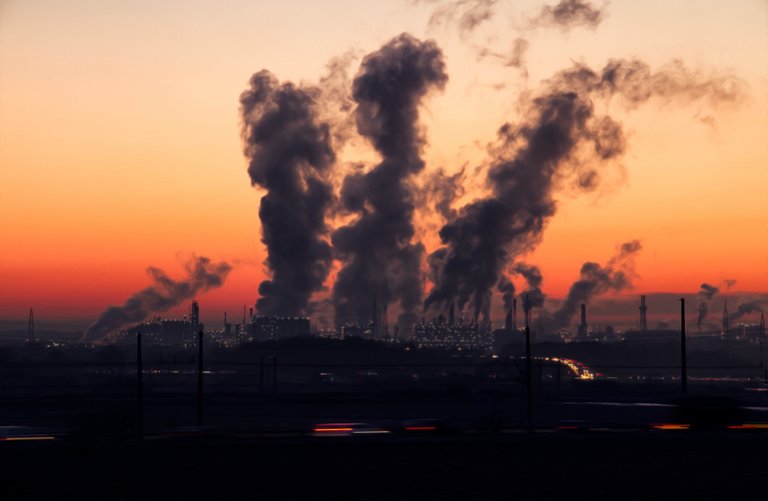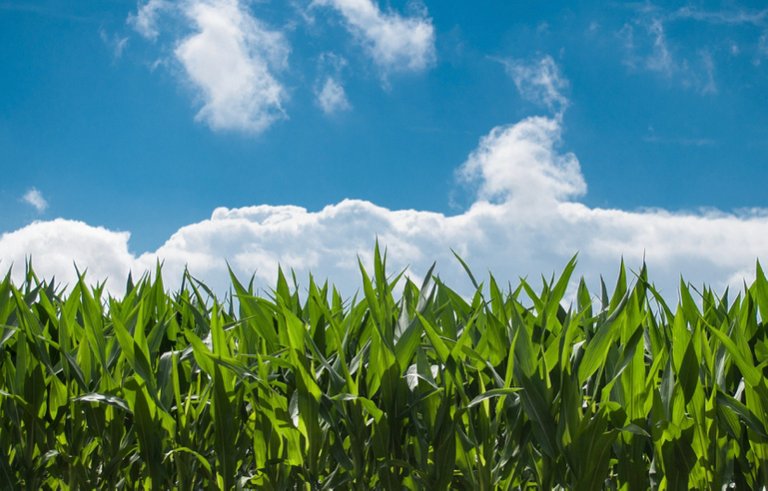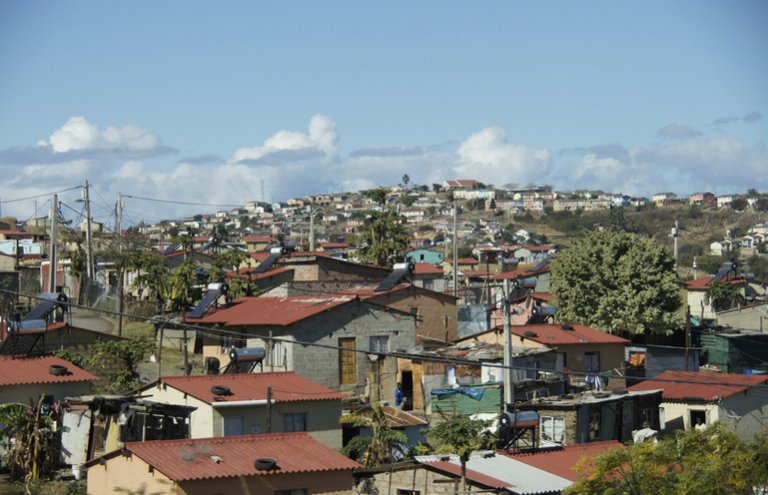The Effectiveness of Small-Scale Anaerobic Digesters in Reducing Carbon Dioxide Emissions (IV)
Welcome to the #stemsunday edition of my anaerobic digester series, if you would like to see the introduction post please click here.
Click here for Part II.
Click here for Part III.
This is Part IV of my series.
Today I will cover a few more hazards to biogas as well as discuss the need and demand for biogas around the world.
Hazards of Biogas Cont.
Although there are many economic and environmental benefits of using ADs, there have been studies conducted that revealed the dangers on certain effluents of ADs, based on the types of biomass that were used during the AD process.
The type of organic matter that is used as influent can have harmful effects on the environment when the effluent is used as a means of organic fertilizer for crops that will ultimately be consumed by humans. A study was conducted in Norway to access the conditions of heavy metals, organic pollutants, harmful bacteria, and pesticides found in effluent from ADs used for fertilization.
High levels of zinc, copper, and cadmium were detected in several fertilizers and very few organic pollutants were discovered. Researchers also analyzed the fertilizer looking for the existence of 250 pesticides, only 11 were present. No harmful bacteria was found in any of the samples.
The study concluded that the risk of contaminants in the fertilizer for agricultural use was extremely low. However, it is important to note that there is a possibility of contaminants (human health and environmental) being present in the effluent of ADs (Govasmark et al., 2011).
The Need for Biogas
In the modern era, consumption of fossil fuels for production of energy is distributed highly unequal in the world based on a country’s stage of development. Many developing countries that account for a small percentage of the world’s population, consume the majority of the world’s resources.
The unequal access to energy further advances MDC’s, while LDC’s struggle to produce basic energy needs. Another side- effect of this energy distribution is that larger populations of LDC’s are required to use less efficient means for heating, cooking, and sanitation; such as the burning of wood, coal, and animal dung which can have adverse health effects as well as contribute to deforestation and ultimately resulting in higher CO2 emissions and less sequestration of greenhouse gasses (GHG) from the removal of forests.
By implementing ADs for the production of biogas, LDC’s can reduce energy costs, health issues, and environmental impact of CO2 emissions. The resulting effect will be the reclamation of forest lands and the use of valuable phosphorous and nitrogen for the production of crops for animal feed and human
consumption (Rennuit and Sommer, 2013).
Sources of Entire Thesis
Abu-Dahrieha J., A. Orozcob, E. Groomb, and D. Rooneya, 2011. Batch and continuous biogas production from grass silage liquor. Bioresource Technology, 102(23):10922-10928.
Arthur R., M. F. Baidooa, and E. Antwib, 2011. Biogas as a potential renewable energy source: A Ghanaian case study. Renewable Energy, 36(5):1510-1516.
Berglund M. and P. Borjesson, 2005. Assessment of energy performance in the life-cycle of biogas production. Biomass and Bioenergy, 30:254-266.
Energy Information Administration (EIA), 2009.
Emissions of greenhouse gases in the United States. Hazardous Waste Consultant, 29(5):1.5-1.20.Gosens, J., Y. Lu, G. He, B. Bluemling, and T.A. Beckers, 2013. Sustainability effects of household-scale biogas in rural China. Decades of Diesel, 54:273–287.
Govasmark E., J. Stäb, B. Holen, D. Hoornstra, T. Nesbakk, and M. Salkinoja-Salonend, 2011. Chemical and microbiological hazards associated with recycling of anaerobic digested residue intended for agricultural use. Waste Management, 31(12):2577-2583.
Lansing S., R.B. Botero, J.F. Martina, 2007. Waste treatment and biogas quality in small-scale agricultural digesters. Bioresource Technology, 99(13):5881-5890.
Naja G.M., R. Alary, P. Bajeat, G. Bellenfant, J.J. Godon, J.P. Jaeg, G. Keck, A. Lattes, C. Leroux,
H. Modeloni, M. Moletta-Denatj, O. Ramalhoj, C. Roussellei, S. Wenischc, and I. Zdanevitchk, 2011. Assessment of biogas potential hazards. Renewable Energy, 36(12):3445-3451.Odlare M., V. Arthurson, M. Pell, K. Svensson, E. Nehrenheim, and J. Abubaker, 2011. Land application of organic waste – Effects on the soil ecosystem. Applied Energy, 88(6):2210-2218.
Peura P. and T. Hyttinen, 2011. The potential and economics of bioenergy in Finland. Journal of Cleaner Production, 19:927-945.
Rennuit, C. and S.G. Sommer, 2013. Decision support for the construction of farm-scale biogas digesters in developing countries with cold seasons. Energies, 6(10):5314-5322.
Till J., A. Königb, and L. Eltropa, 2014. Bioenergy villages in Germany: Bringing a low carbon energy supply for rural areas into practice. Renewable Energy, 61:74-80.
Wang C.B. and L.X. Zhang, 2012. Life cycle assessment of carbon emission from a household biogas digester: Implications for policy. Procedia Environmental Sciences, 13:778 – 789.
Weichgrebe D., I. Urban, and K. Friedrich, 2008. Energy- and CO2-reduction potentials by anaerobic treatment of wastewater and organic kitchen wastes in consideration of different climatic conditions. Water and Science Technology, 58(2):379-384.
Zhang L.X., C.B. Wang, and B. Song, 2013. Carbon emission reduction potential of a typical household biogas system in rural China. Journal of Cleaner Production, 47:415-421.
Stem Sunday
Please check out the #stemsunday initiative by @stem.curate here.




Hello,
Your post has been manually curated by a @stem.curate curator.
We are dedicated to supporting great content, like yours on the STEMGeeks tribe.
If you like what we are doing, please show your support as well by following our Steem Auto curation trail.
Please join us on discord.
This post was shared in the Curation Collective Discord community for curators, and upvoted and resteemed by the @c-squared community account.
If you are a community leader and/or contest organizer, please join the Discord and let us know you if you would like to promote the posting of your community or contest.
@c-squared runs a community witness. Please consider using one of your witness votes on us here
Hey mate, I'd like to say I understand all of this and indeed could do so, although it'd be a lie. I'm a basic sort of dude. I'd have trouble spelling the word thesis and and I doubt they'd let me stop foot within a university. Kudos to those who show the aptitude and persistence to gain a degree though. My university was life - No minimum grades required to get in.
Dude, you are one of the smartest guys on here! Well, it took me nearly seven years to get my bachelor's so yeah... Not the brightest either but I busted my ass and learned a lot. Nothing like life experience though, that's for sure!
Posted using Partiko iOS
Aww, not true but thanks all the same. Perseverance goes a long way don't you think? It's so easy to give up on a thing...But you didn't and got the result you wanted. 7 years of getting after it, effort, ownership and simple hard work...But the result came...Rather you grabbed it...No one dropped in your lap as seems to be the expectation these days.